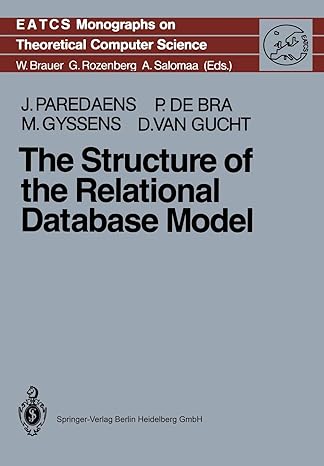Question
Python - Machine Learning Question: please help me with question (a) and (b), Thank you!!! Problem 5: Gradient Descent and the learning rate a) By
Python - Machine Learning Question: please help me with question (a) and (b), Thank you!!!
Problem 5: Gradient Descent and the learning rate
a) By modifying the learning rate below, show how the convergence takes longer or doesn't converge at all. Can you explain in words or math why this is? (Modify the following code, and give answers, use words or math to explain it.)
=====================Code Chunk =======================
from numpy import *
# y = mx + b # m is slope, b is y-intercept def compute_error_for_line_given_points(b, m, points): totalError = 0 for i in range(0, len(points)): x = points[i, 0] y = points[i, 1] totalError += (y - (m * x + b)) ** 2 return totalError / float(len(points))
def step_gradient(b_current, m_current, points, learningRate): b_gradient = 0 m_gradient = 0 N = float(len(points)) for i in range(0, len(points)): x = points[i, 0] y = points[i, 1] b_gradient += -(2/N) * (y - ((m_current * x) + b_current)) m_gradient += -(2/N) * x * (y - ((m_current * x) + b_current)) new_b = b_current - (learningRate * b_gradient) new_m = m_current - (learningRate * m_gradient) return [new_b, new_m]
def gradient_descent_runner(points, starting_b, starting_m, learning_rate, num_iterations): b = starting_b m = starting_m for i in range(num_iterations): b, m = step_gradient(b, m, array(points), learning_rate) return [b, m]
def run(num_iterations): points = genfromtxt("../data/data.csv", delimiter=",") learning_rate = 0.0001 initial_b = 0 # initial y-intercept guess initial_m = 0 # initial slope guess num_iterations = num_iterations print("Starting gradient descent at b = {0}, m = {1}, error = {2}".format(initial_b, initial_m, compute_error_for_line_given_points(initial_b, initial_m, points))) print("Running...") [b, m] = gradient_descent_runner(points, initial_b, initial_m, learning_rate, num_iterations) print("After {0} iterations b = {1}, m = {2}, error = {3}".format(num_iterations, b, m, compute_error_for_line_given_points(b, m, points))) for i in range(0,len(points)): plt.scatter(points[i,0],points[i,1]) plt.scatter(points[i,0],m*points[i,0]+b,color='r')
run(10)
=====================================================================
======================Code Chunk =====================
# Use this to visually discuss convergence rate based on learning rate
#for num in range(0,10): # run(num) # plt.show()
=================================================

Step by Step Solution
There are 3 Steps involved in it
Step: 1

Get Instant Access to Expert-Tailored Solutions
See step-by-step solutions with expert insights and AI powered tools for academic success
Step: 2

Step: 3

Ace Your Homework with AI
Get the answers you need in no time with our AI-driven, step-by-step assistance
Get Started


